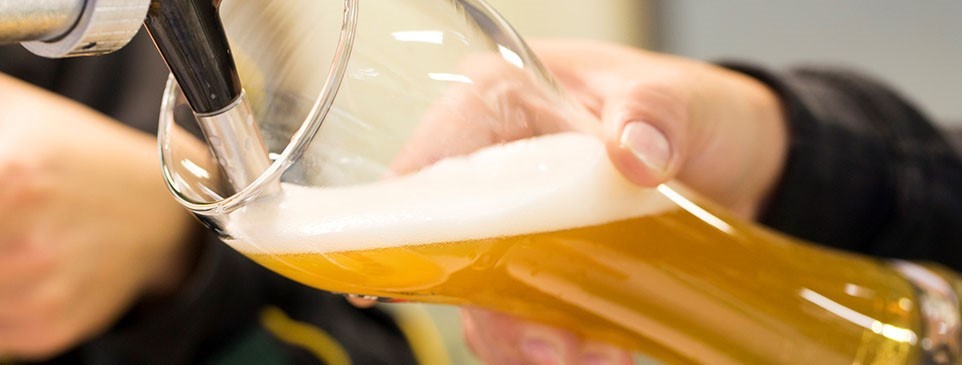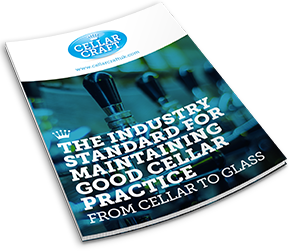The Dos and Don’ts of Line Cleaning

Everyone in the industry has their own little hints and tips when it comes to using beer line cleaners, some work and some can cause you more issues in the long term. Following a few simple rules will leave you with a better product and happier customers.
All the Dos
- Read all of the instructions on the container before you start
This is very important, there are several types of beer line cleaner on the market today and each one will  need different conditions to work most effectively or sometimes require different pieces of kit. There is nothing worse than getting halfway through a clean before you realise something is missing and you have wasted your time or can’t complete the clean properly.
need different conditions to work most effectively or sometimes require different pieces of kit. There is nothing worse than getting halfway through a clean before you realise something is missing and you have wasted your time or can’t complete the clean properly.
- Clean the lines at the frequency recommended by the brewery
The brewery knows their beer, they know how to treat it and how it will be effected by storage conditions, how long it should last once opened and how often the beer lines used to dispense it should be cleaned. They have performed extensive tests on their products before you get a chance to buy it. If they say the beer lines should be cleaned every 7 days then they should be cleaned every 7 days.
- Follow the instructions properly to ensure the lines receive a full clean
In the same way that the brewery knows how their beer will behave, beer line cleaner manufacturers know how their product works and will clean the dispense lines. If the instructions say to allow the line cleaner to soak for 30 minutes changing the solution every 10 minutes then make sure this happens. If you are using a purple line cleaner and it stays purple after the first 10 minute soak do not assume your lines are properly clean, purple line cleaner will only stay purple if all of the bacteria has been killed but the lines can still contain inorganic contaminant which will not cause the colour change.
If the manufacturer has stated not to leave the beer line cleaner in the dispense lines longer than 45 minutes then don’t leave it longer or overnight, this will lead to your beer lines sustaining damage to the pipe linings which will cause tainting and dispense issues such as flat beer.
- Ensure the cleaning vessel is empty and all the equipment you are going to use is clean before you start
Do not leave last week’s rinse water sitting in the cleaning vessel until you are due to carry out your next line clean. Water, if left to sit for any length of time will become contaminated with bacteria, moulds etc. This means when you are using last week’s water to rinse out your beer you are actually adding more contamination to the beer lines. A dirty cleaning vessel will also cause the line cleaning solution to be weakened as part of its cleaning power will be used up cleaning the vessel before it is introduced to the dispense lines. Weakened cleaning solution means that your lines are not getting the clean they need which may lead to contamination building up over time, resulting in the need for deep cleans and taint removal systems taking up more time and causing more expense.
- Use the dosage rate recommended by the manufacturer
If you put too much beer line cleaner into the system then you will damage the lines, once the lines are damaged then you will get dispense issues such as flat beer, phenolic taints (medicinal flavours and smells) and clouding. Too little beer line cleaner and you may not remove all of the bacteria present in the line, this will lead to bacterial taints with a vinegar or sulphur odour/taste. Protein, yeast and scales will build up in the lines causing fobbing; floating particulates in a customer’s glass and poor head retention
- Avoid contact with your eyes and skin
All beer line cleaners are dangerous, to be able to kill biological contamination and to remove scales and inorganic deposits they need to be. Caustic Chlorinated and Surfactant based cleaners will cause burns to the skin as they contain high levels of sodium or potassium hydroxide, there are even stories of publicans burning their feet because line cleaner has been spilt onto their shoes. Hydrogen Peroxide also causes burns if the concentration is high enough. At low concentrations it causes skin to turn white. All three sorts of line cleaner can cause blindness if they get into your eyes. Make sure you wear appropriate Personal Protective Equipment – As a minimum this should be safety glasses and suitable chemical resistant gloves.
- Store safely away from customers, especially children and keep in a cool place away from direct sunlight
Safety again, you do not want your customers to come into contact with beer line cleaners, as stated above they can cause serious external injury but also if ingested can lead to life changing internal injuries such as the ones which occurred in Leeds to David Caminal reported recently in the National Papers. Proper storage will also help extend the shelf life of line cleaners keeping them effective for longer.
All the Don’ts
- Use hot or warm water (Unless it is specifically stated in the manufacturer’s instructions)
A common myth is that warm or hot water will enhance the cleaning of beer line cleaners and this is incorrect. For caustic chlorinated cleaners it can enhance the cleaning ability of the caustic component to remove deposits of yeast and protein, but the elevated temperature will cause the chlorine to gas off from the top of the cleaning solution while it is in the cleaning vessel reducing the biocidal action and weakening its effects when introduced into the dispense system. This can lead to problems with bio-film growth and flavour taints.
For Hydrogen Peroxide based cleaners a hot or warm solution will cause the peroxide to react in the cleaning vessel and break down into water and oxygen, once again making the solution ineffective as a biocide (the peroxide cleaners do not contain any scale or protein removing chemicals so there is no enhancement over standard beer line cleaners when using a warm solution). For Surfactant based cleaners the caustic component effect is enhanced in warm/hot water but it will lead to increased foaming and can possibly denature and degrade the biocide making it less effective.
- Mix with any other chemicals
Once again, unless specifically stated in the manufacturer’s instructions, mixing of chemicals should never be done. Mixing a chlorine containing chemical with any form of acid will generate the release of chlorine gas which in the confined spaces of your cellar is highly dangerous and can lead to loss of life.
Hydrogen Peroxide containing chemicals can react violently with some chemicals depending on their composition to cause liquids to boil, which can scold and cause serious personal injury. Hydrogen Peroxide containing chemicals can also auto-ignite and cause serious fires. During auto-ignition a large quantity of oxygen is released which actually fuel fires. Surfactant based chemicals are more likely to separate and cause issues with residues in the beer line system which are difficult to remove.
- Store beer line cleaners in any container or bottle other than the original container the product was supplied in.
All of these chemicals are hazardous and can cause serious injury and harm to the user if used incorrectly. Putting purple beer line cleaner into an old squash bottle can actually look like blackcurrant juice and be very tempting when served in a glass but it can lead to a life changing injury or potentially death. Is that water in the bottle? No its hydrogen peroxide which while non-toxic can also cause serious internal injuries and even if at a safe concentration may not be medicinal grade and can contain impurities that can cause serious harm. Using any container that may contain residues can also lead to incompatible chemicals being mixed together causing or creating dangerous chemical reactions such as those previously mentioned above.
- Leave cleaning solution in the dispense lines for longer than recommended
This will cause you serious issues over time as it will cause damage to the beer lines, cracking, stripping and denaturing the inner lining of the pipes. Breakdown and degradation of the wall in the beer lines will create cracks and crevices which will hold bacteria allowing colonies to grow, causing biological flavour taints, issues with fobbing due to trapped yeasts and proteins. Damaged beer lines will also cause reduced head retention as the CO² in the beer will be able to leach out of the lines leaving it flat.
- Use for anything other than beer line cleaning
Beer line cleaning chemicals are industrial grade cleaners and are not appropriate to use as floor cleaners. While you may think you are saving money by sloshing the excess chemical residues over the cellar floor when emptying the cleaning vessel you could be endangering yourself and your staff. Residues on the floor can react with the detergents and general debris releasing potentially lethal chlorine gas, start fires with hydrogen peroxide or cause chemical burns to a person if the cleaner soaks through your shoes and comes into contact with your skin. Always select and use the right cleaner for the job you want to do, never compromise and always put safety first.
- Use more than the recommended dosage rate
We have already referred to the consequences of using the wrong dosage in the Do’s section above, but to reiterate, the chemicals are designed for a specific application and when used as instructed give the best and most effective results without causing damage or a risk to safety.
So, where’s the silver lining to this cloud of despair?
It all seems like a whole heap of high-risk operations just to get a pint on the table, and it’s easy to be overwhelmed by this long list of chemical jeopardy. However, the truth is relatively simple:
- Safety is all – learn about best practice and how to avoid all risks
- Training – take the time to train all your staff about cellar and bar safety
- Form a habit – safe handling and cleaning is a case of setting and sticking to a regime and not cutting corners
- Know your dosage – improper use of beer line cleaner will cause you issues in the dispense system through either poor cleaning or damage from excessive concentrations. Getting the dose right will save you acres of time, money and heartache.
- Got a question? – never be afraid to ask an expert for advice and any resources they have available.

Download the entire CellarCraft guide
